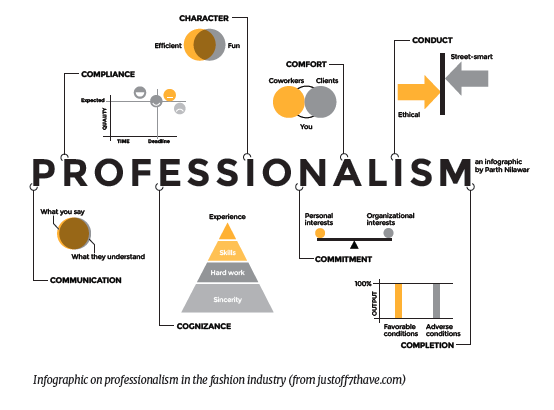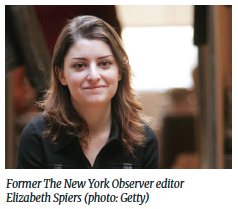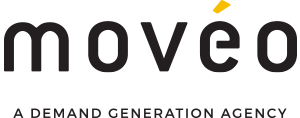According to urbandictionary.com, “professionalism” is any business practice in which happiness is sacrificed for success.
While tongue was likely firmly planted in cheek by the writer who came up with that definition, what is no laughing matter are the ways in which professionalism itself is being sacrificed. Before I explain, I should clarify a few things:
- In this paper, the word “professionalism” is used primarily in the context of content — artistic creation, criticism, reporting, analysis, etc. Lawyers, architects, doctors and other fields typically recognized as professional will fall outside its consideration.
- My definition of “professional” is someone who has learned his or her craft and has acquired particular knowledge or skills and, often, certification in the process. This is in contrast to an amateur, a person who may have little or no formal training.
- The professionals I’m talking about most often work, albeit begrudgingly at times, with other professionals who serve certain roles that make their work possible or “better.” This may include providing patronage (i.e., support or gainful employment) and/or oversight (i.e., reviewing and/or modifying content to ensure quality or adherence to a set of standards) — a journalist working for a publisher and editor of a magazine, for example. Again in contrast, an amateur often works alone and is usually not compensated for his or her effort.

The rise of the raw
For years, the type of professionalism described previously has produced everything from great works of art (e.g., a Kubrick film) to more prosaic material (e.g., an article in People magazine). In either case, the professionalism of the content, if not its socially redemptive value, has usually never been in question. Now, much of the content we are exposed to is produced by amateurs — raw. Far from apologizing for a lack of professional “veneer,” its authors (and many of the consumers who indulge them) do not view this as a shortcoming. Many would even praise amateur content for its authenticity — as work devoid of artifice, pretense and a certain amount of bourgeois bias.
Today, such content is everywhere, from discussion boards, blogs, social media and review aggregators to photo sharing networks, video portals and fan fiction sites. Examples of amateur content on “old media” — TV, newspapers, radio, etc., are still few and far between, but on the Internet they are omnipresent. Amateurs are able, like never before, to create and disseminate content in ways that would previously have been impossible — whether due to legal restraints, financial constraints or simply good taste. As more and more of our content is consumed digitally, this has major implications — on the future of professionalism, if not the way we, as human beings, go about interacting with our world.
This observation has been well covered by a number of analysts over the years. In 2007, Andrew Keen came out with a provocative book entitled, The Cult of the Amateur: How Today’s Internet is Killing Our Culture. In it he argues that professionals act as “expert filters,” analyzing and regulating information as it reaches us. He views this process as beneficial, and believes its circumvention lessons the quality of popular discourse (amongst other evils). While Keen may go too far when he warns of a future where “when ignorance meets egoism meets bad taste meets mob rule,” his concern about the rise of the raw is not misplaced — like him, I believe there are larger societal implications at play here.
An unedited life
 In his blog post critiquing the then editor of The New York Observer, Elizabeth Spiers, Felix Salmon of Reuters writes:
In his blog post critiquing the then editor of The New York Observer, Elizabeth Spiers, Felix Salmon of Reuters writes:
“Spiers doesn’t have either the time or the money to have a layer of experienced journalists reworking her bloggers’ prose before it’s published. And so, in the proud tradition of good blogs everywhere, readers are left with a highly variable product. The great is rare; the dull quite common. But — and this is the genius of the online format — that doesn’t matter, not any more, and certainly not half as much as it used to. When you’re working online, more is more. If you have the cojones to throw up everything, more or less regardless of quality, you’ll be rewarded for it — even the bad posts get some traffic, and it’s impossible ex ante to know which posts are going to end up getting massive page views. The less you worry about quality control at the low end, the more opportunities you get to print stories which will be shared or searched for or just hit some kind of nerve.”
Whether you agree with this assessment or not, clearly we can all agree that the quality of content — in aggregate — has gone down in recent years. Whether you’re talking about the editorial proclivities of a major metropolitan newspaper or a cat video on YouTube, fewer and fewer people give a damn about many things that used to be highly prized — from production value and stagecraft to spelling, style and grammar.
Many companies have taken a ‘casual Fridays’ approach to their brands.
You may argue that the professionalism I’m talking about still exists, but there’s just less of it. You’d be right, but trust me, it better watch its back. Working in the communications industry for many years, I’m constantly struck by the everyday decisions made about quality. Many companies have taken a “casual Fridays” approach to their brands. While compromises have always been part of the job, in the past they were forced by deadline or budget (or both). Today, it’s something different.
Here today, gone tomorrow
A few weeks ago, I was having lunch with a friend of mine who is in the video production business. He was bemoaning his clients’ ready willingness to produce something of lesser quality — without the guilt that formally would have plagued them for doing so. He asked me why I thought this was happening. I told him that almost all content is now viewed as a consumable. Thanks to the Internet, so much of it is now needed to feed “the machine” that there is no time — or even need, due to its ephemeral nature — to worry about how professional something is. As Salmon says, it is now about quantity over quality. If content is raw, so be it.
Whether a generalized drop in the quality of content is causing some sort of societal malaise is not clear, but some disconcerting early symptoms are appearing. Americans now lead unedited lives — we pay less attention to what we’re typing on our phones due to app-imposed character limits. Text-inspired abbreviations are seeping into our long form writing. Proofread emails? Forget it. Even professional content is being affected by quality’s newfound paucity — look at how much low-grade content is now being produced, from “found footage” movies to reality TV. Ultimately, this trend is bound to influence our standards, if not our behavior — how many young people have begun to look at the cast members of shows like “Jersey Shore,” or “The Real Housewives,” as role models?
Facts, schmacts
A couple years ago a friend told me he was thinking of heading to Arizona. His departure seemed sudden, and when pressed for an explanation, he began an incredible story about the arrival in our solar system of a brown dwarf star, Elenin, and how he had read blogs and saw videos on the Internet that warned its near approach to the Earth would cause calamitous seismic effects. My friend, a usually rational person, believed Arizona might be a safer place to “ride out the storm.” This was despite the fact that the professionals at NASA claimed Elenin was simply a passing comet of negligible mass that would have no perceptible effect on the Earth.

Now of course Elenin harmlessly came and went, as so many of these types of pseudo-scientific predictions do, but the fact that my friend was actually thinking about altering his behavior due to this alarming amateur content gave me pause. The “lunatic fringe” has always existed, but today, “Many companies have taken a ‘casual Fridays’ approach to their brands. Amateur hour or the end of
professionalism? How raw content is reshaping our world. / 5 the Internet has given it both a stage and a packed auditorium. No longer do professional fact (and in some cases, sanity) checkers prevent the most outlandish of theories from going mainstream. Many of the things that we hear, from the Obama “birther” controversy to shadowy groups like “The Illuminati” controlling organizations like the Red Cross or Disney, are things cooked up by people with fewer qualifications than the average order taker at a fast-food joint. Yet, if we hear these things enough, they begin to erode something we used to have a lot more of — certainty.
I read recently about a poll that appeared to show that people are growing skeptical that climate change is really happening. To quote the poll’s lead author, Dr. Wouter Poortinga of Cardiff University, “stories questioning the causes, impacts and existence of climate change (are) eroding public opinion.” We live in an age where the average blogger has no problem challenging a Nobel-prize winner. Don’t get me wrong, I’m not an elitist, and everyone has the right to his or her opinion. But I do worry about how constructive such opinions are when delivered en masse. You need go no further than a Yelp restaurant review to find out how plentiful, yet polarizing, amateur opinion can be. In fact, in September of 2013, the website for Popular Science magazine announced it was no longer accepting reader comments on new articles for this very reason. In their words, “a fractious minority [can] wield enough power to skew a reader’s perception of a story.”
While a certain amount of skepticism is healthy for society, too much can turn into cynicism. A lack of trust in everything from our political system to the scientific establishment to the brands we purchase cannot possibly bode well for our future. It can undermine the very cultural consensus that is needed to create progress.
Is professionalism overrated?
If this is starting to sound like a lamentation on amateur content, it is not meant to be. It is not going away anytime soon, nor should it. Yes, I realize it was only a paragraph ago that I was cautioning about the dire social consequences its rise might engender. These are real and we, as content consumers, will have to practice greater vigilance in the future to make sure they don’t transpire. But it has always been the individual’s responsibility to separate the good from the bad, fact from fiction — even when content was produced exclusively by professionals. Why should it be any less so going forward?
…it has always been the individual’s responsibility to separate the good from the bad, fact from fiction…
As far as the dearth of quality in content, that, too, is not as cut-and-dried as it might first appear. In his book, Disciplined Minds, Jeff Schmidt argues that professionals are actually less creative and diverse in their opinions than amateurs (which he attributes to indoctrination that accompanies most professional training). To be sure, raw content can open our eyes to what is compelling and informative in our world just as much as professional content. Yes, it is often of lesser quality, but that does not take away from its ability to entertain and educate us. What such work often lacks in polish, it can make up for in exuberance. To quote Chris Anderson’s blog, The Long Tail, “I’ll take a passionate amateur over a bored professional any day.”
Besides, why should professionals have the last word on quality anyway? Aren’t they the ones that have most to lose from this shift? The street artist Banksy goes so far as to call graffiti — the quintessential example of unprofessional art — a form of social struggle that allows individuals to “snatch power, territory and glory from a bigger and better equipped enemy.”
Peaceful coexistence
Whether or not the pendulum has swung too far in favor of the “raw” in recent years is a moot point. The fact is, amateur-produced content is not only valued by its consumers, it’s usually free. That alone is enough to ensure its prominence — if not dominance — in the years to come. Many, of course, will fight the “dying of the professional light,” but will they succeed? Should they succeed?
Maybe professionalism just needs to find the right niche — to quote a recent article by New York Times writer David Carr, “Publishers who turned out under-designed and under-edited books and magazines in the Internet age have learned the hard way that consumers expect excellence in print.” Yet another possibility is the distinction between the two will just fade away. Truth be told, the lines between what is amateur and what is professional have always been somewhat blurry. Shakespeare and Da Vinci were considered amateur artists in their time!
 In a blog post in Techdirt, Tim Cushing talks about a new breed of content creators — the professional amateur: “A pro-amateur perhaps works on a project as a side-line to her day-job but she treats it seriously. Like any struggling writer, there is the work and the need to pay the rent. The difference is that the proamateur then takes her work and distributes it directly. She creates a book, an album, a TV series and just puts it out there. It only really costs her time to do it, and if it works it works. If not, she does something else.”
In a blog post in Techdirt, Tim Cushing talks about a new breed of content creators — the professional amateur: “A pro-amateur perhaps works on a project as a side-line to her day-job but she treats it seriously. Like any struggling writer, there is the work and the need to pay the rent. The difference is that the proamateur then takes her work and distributes it directly. She creates a book, an album, a TV series and just puts it out there. It only really costs her time to do it, and if it works it works. If not, she does something else.”
Regardless of what the balance is between what content is raw and what is not, the important point is that it’s not a zero sum game. In fact, professionalism and amateurism can play nice together. I like, for example, the fact that the movie review site Rotten Tomatoes offers both a critics score and an audience one. YouTube is now incorporating the whole spectrum of content creation, from amateur to professional. To quote senior director of IT at Wharton, Kendall Whitehouse, “Both [professional and amateur content] bring value. The latter brings quickness and a personal viewpoint and the former provides analysis and consistent quality. The world I want to live in includes healthy doses of both categories.” Me too. So let’s find ways to embrace both expert and raw content, viewing each in its proper light. Exploring the differences between them can make for an interesting white paper topic, but I believe its wrong to necessarily see them as existential threats to one another. That’s professionally speaking, of course.
Redefining what an “advertising agency” can be, Movéo uses datadriven insight to help business-to-business and healthcare brands quantifiably improve marketing performance. For more information, visit moveo.com
Download



